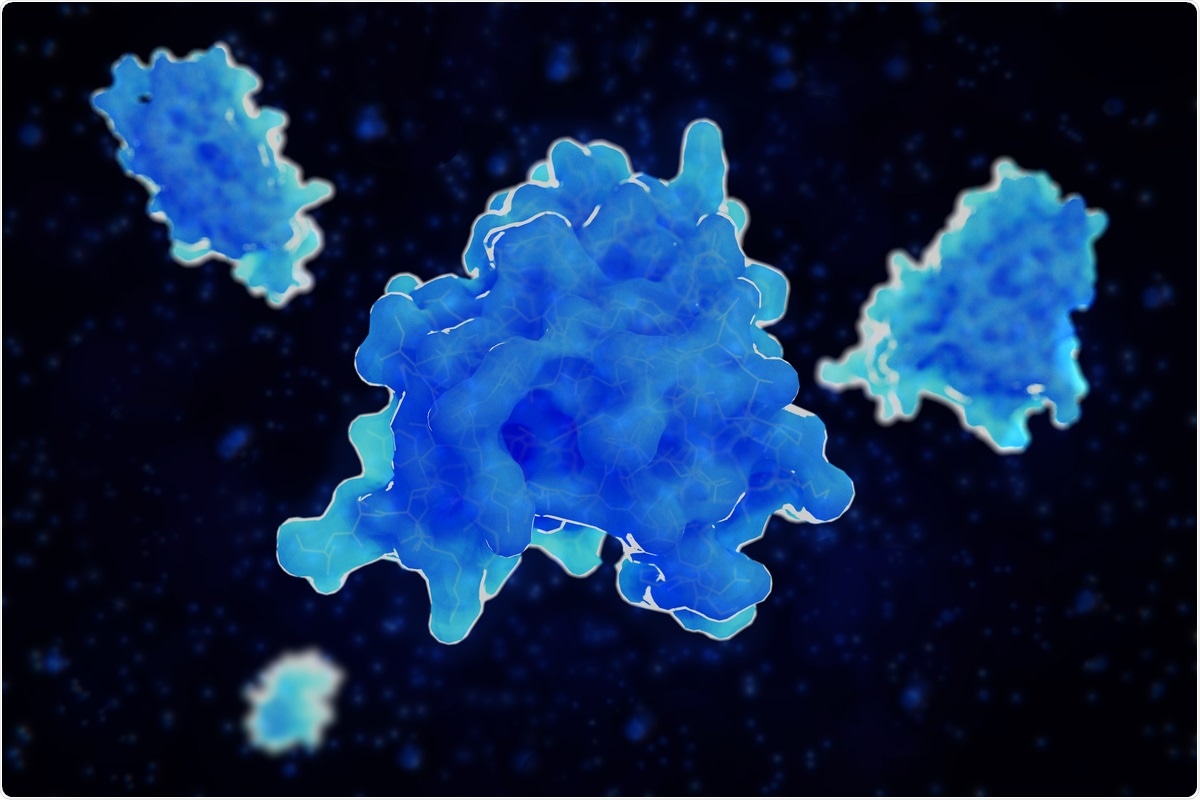A small number of people who recover from coronavirus disease 2019 (COVID-19) experience long COVID — persistent symptoms that range from neurological issues to fatigue. The underlying cause behind long COVID remains poorly understood, but a new study published as a preprint in The Lancet suggests a trio of cytokines — IL-1ß, IL-6, and TNF-α — are associated with long COVID symptoms.
 Study: From Online Data Collection to Identification of Disease Mechanisms: The IL-1ß, IL-6 and TNF-α Cytokine Triad Is Associated With Post-Acute Sequelae of COVID-19 in a Digital Research Cohort. Image Credit: Juan Gaertner/ Shutterstock
Study: From Online Data Collection to Identification of Disease Mechanisms: The IL-1ß, IL-6 and TNF-α Cytokine Triad Is Associated With Post-Acute Sequelae of COVID-19 in a Digital Research Cohort. Image Credit: Juan Gaertner/ Shutterstock
IL-1ß, IL-6, and TNF-α are cytokines released from monocytes and macrophages in response to an immune response.
The study suggests long COVID can persist months after recovery from severe acute respiratory syndrome coronavirus 2 (SARS-CoV-2) and is more likely among people who had mild SARS-CoV-2 infection.
The researchers write:
Identification of the molecular underpinnings of PASC will help to design molecular targeted treatment approaches for an increasing global public health problem. The digital epidemiology and biobanking approach used here may serve as a blueprint for other urgent research questions.”
The study
A total of 8,077 individuals were invited to participate in a digital health survey known as DigiHero. About 919 had previously recovered from a COVID-19 infection, and about 80% reported their illness as mild or moderate. About 80% of participants had at least one COVID-19 vaccine dose.
People with previous illness completed a questionnaire focused on symptoms of long COVID. They also donated blood samples to allow the researchers to measure cytokine and autoantibody levels. Cytokine profiles were validated with a separate cohort who had early COVID-19 infection.
The current results are based on 318 participants, with 258 recovering from COVID-19 eight months prior. About 67.8% of participants reported symptoms four weeks after recovering from COVID-19 and were considered to have long COVID.
Of the people with long COVID, 20% had symptoms for three months, and 60% continued to exhibit symptoms at the time of the study. About 50% of long COVID patients stated they had one severe symptom at least four weeks after COVID-19 illness. The most severe symptoms included fatigue and trouble breathing.
Women more than men were more likely to experience long COVID. There was no difference by age. People with mild COVID-19 symptoms were more likely to develop long COVID. More specifically, people who reported lymph node swelling, brain fog, and trouble breathing during COVID-19 infection had more instances of long COVID.
While not verified with clinical studies, some people have reported vaccination helping with long COVID symptoms. However, in the current study, the risk of long COVID was similar in people who got infected before or after vaccination. Additionally, vaccinated individuals reported similar long COVID symptoms as those that were not. The results indicate that vaccinating after infection does not resolve long COVID.
Blood sampling data showed that people who recovered from COVID-19 had high systemic cytokine deregulation, including elevated levels of TNF-α, TNF-β, IL-1β, IL-6, IL-8, and IL-12p70.
Of all the cytokines studied, IL-1ß, IL-6, and TNF-α were associated the most with long COVID. “Interestingly, the levels of these three cytokines were positively correlated with each other in individual participants indicating that they do not identify separate subsets of patients with PASC. These data suggest that persistently elevated levels of IL-1ß, IL-6, and TNF-α may be a hallmark of PASC,” explained the research team.
To understand how these cytokines move from acute COVID-19 infection to promoting long COVID, the researchers took plasma cytokine samples from a separate cohort who were currently infected with SARS-CoV-2 or had earlier recovered from COVID-19 illness.
The results showed that the three cytokines levels rose at different stages of infection. An increase in IL-1ß and TNF-α levels — exceeding amounts seen in patients with bacterial pneumonia — was observed during mild COVID-19 infection. IL-6 and TNF-α levels remained constant during and after infection. But IL-1ß had a late peak two to three months after infection.
*Important notice
Preprints available are not Lancet publications or necessarily under review with a Lancet journal. These preprints are early stage research papers that have not been peer-reviewed. The findings should not be used for clinical or public health decision making and should not be presented to a lay audience without highlighting that they are preliminary and have not been peer-reviewed.
-
Schultheiß C, et al. (2021). From Online Data Collection to Identification of Disease Mechanisms: The IL-1ß, IL-6 and TNF-α Cytokine Triad Is Associated With Post-Acute Sequelae of COVID-19 in a Digital Research Cohort. The Lancet. https://papers.ssrn.com/sol3/papers.cfm?abstract_id=3963839
Posted in: Medical Science News | Medical Research News | Disease/Infection News
Tags: Biobanking, Blood, Brain, Brain Fog, Breathing, Coronavirus, Coronavirus Disease COVID-19, Cytokine, Cytokines, Epidemiology, Fatigue, Immune Response, Lymph Node, Pneumonia, Public Health, Research, Respiratory, SARS, SARS-CoV-2, Severe Acute Respiratory, Severe Acute Respiratory Syndrome, Syndrome, Vaccine

Written by
Jocelyn Solis-Moreira
Jocelyn Solis-Moreira graduated with a Bachelor's in Integrative Neuroscience, where she then pursued graduate research looking at the long-term effects of adolescent binge drinking on the brain's neurochemistry in adulthood.
Source: Read Full Article






